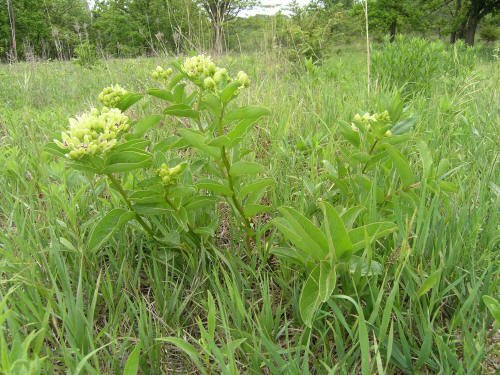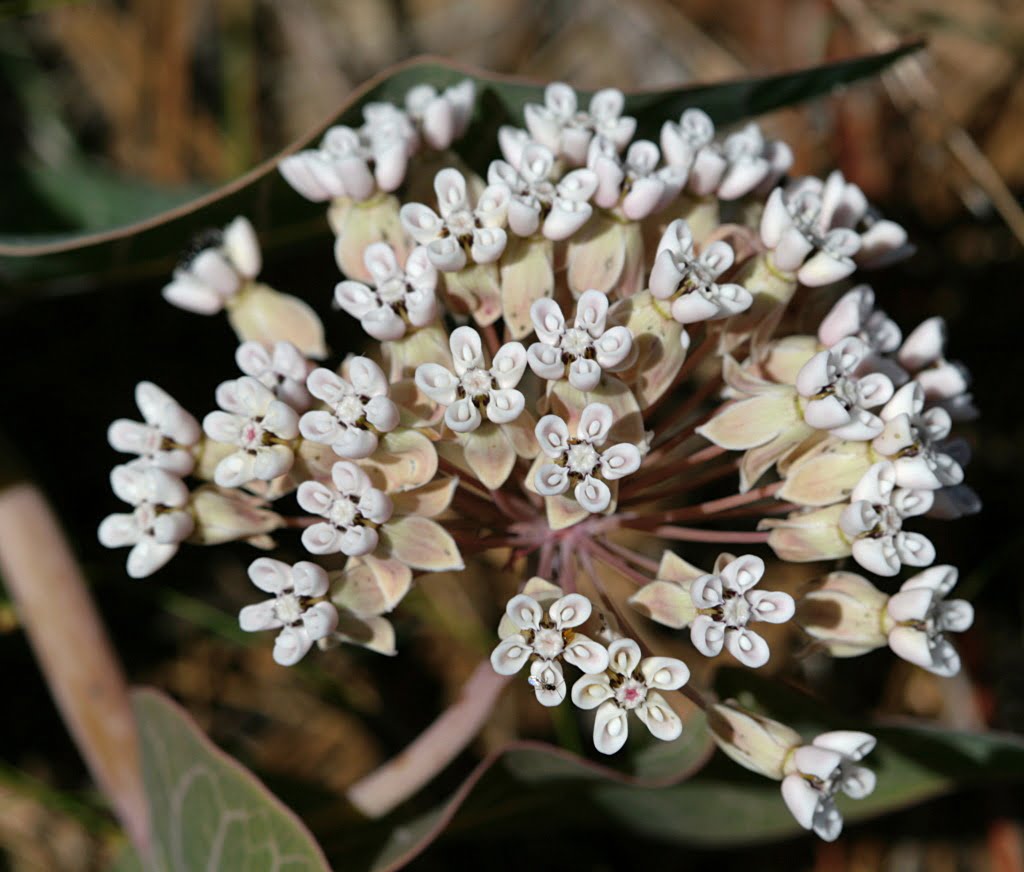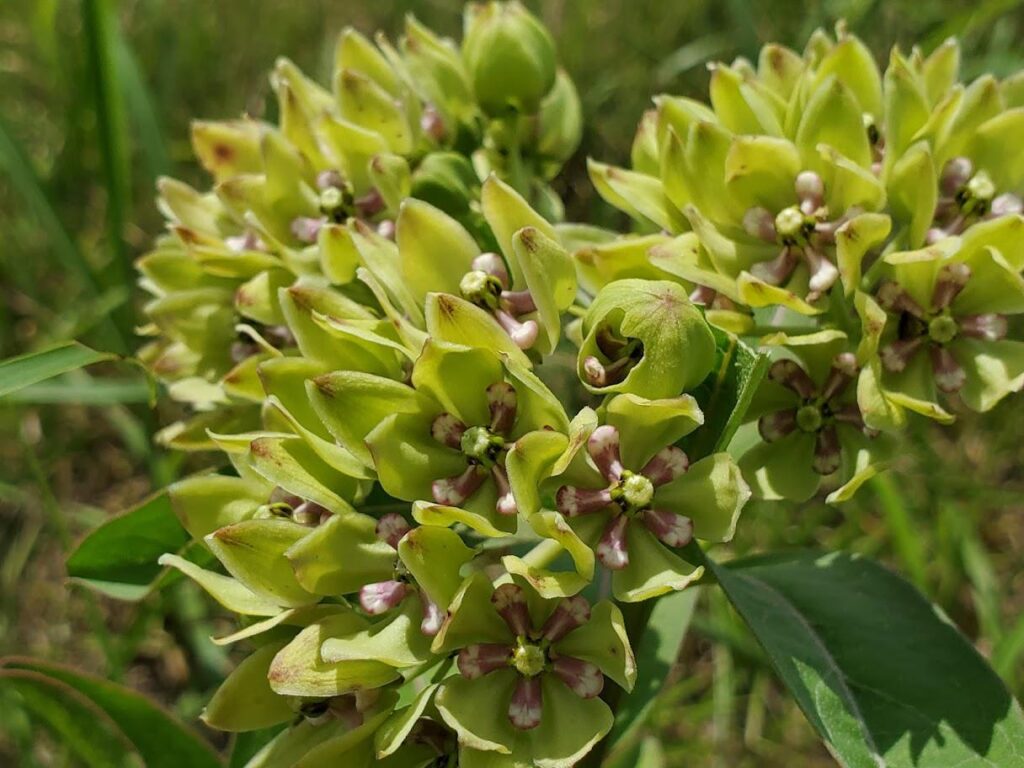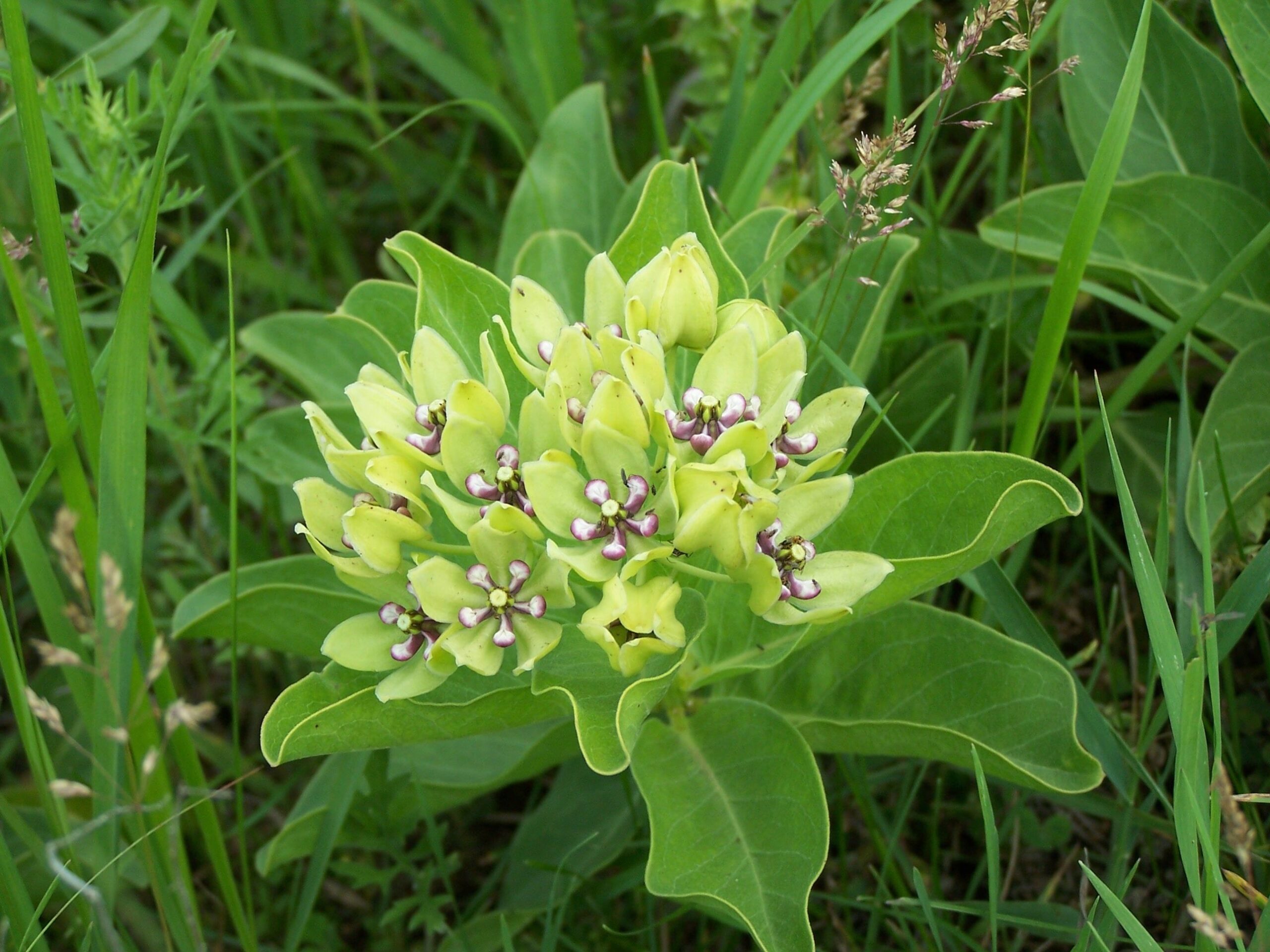Green Antelopehorn, scientifically known as (Asclepias viridis), is a perennial Milkweed plant well-known for its importance in the lifecycle of the Monarch butterfly. The plant provides a crucial food source for the Monarch caterpillars. Understanding its native range and how to care for it is essential for gardeners and butterfly enthusiasts alike.

Native Range
Green Antelopehorn is native to the central and southern United States. Its range extends from Ohio to Nebraska in the north, down to USDA Zone 10 in the Florida Keys and the southern tip of Texas.
USDA Zones
The USDA (United States Department of Agriculture) Hardiness Zones provide a handy guide for gardeners to determine which plants will thrive in their region. Green Antelopehorn is most commonly found in USDA zones 4 through 10.
Indoor Germination
When germinating Milkweed indoors, the same germination protocol should work similarly on all Milkweed (Asclepias).
See Johnny’s Milkweed Germination Protocol

Outdoor Germination and Care by USDA Zone
Zone 4 (Northernmost)
- Germination: Start seeds indoors 6-8 weeks before the last frost. Stratification (cold treatment) of seeds for 30 days can improve germination rates.
- Care: Protect young plants from late frosts. They prefer full sun but can tolerate partial shade. Water regularly but avoid waterlogged soil.
Zone 5
- Germination: Seeds can be started indoors or directly sown after the last frost. Stratification can still be beneficial.
- Care: Full to partial sun is best. Regular watering, ensuring the soil remains moderately moist.
Zone 6
- Germination: Direct sowing after the last frost works well. Stratification is optional but can help.
- Care: Plants in this zone typically thrive with full sun and occasional watering once established.

10 Sandhill Milkweed Seeds Ascslepias Humistrata Pinewood Milkweed Florida-Native
With Johnny Butterflyseed’s Sandhill Milkweed seeds, you’re not just planting flowers; you’re cultivating a living mosaic of nature’s marvels. 10+ Florida Native seeds.
Zone 7
- Germination: Direct sowing in early spring or fall.
- Care: This is an ideal zone for Green Antelopehorn. Provide full sun and water occasionally. Drought tolerant once established.
Zone 8
- Germination: Direct sowing in the fall is optimal.
- Care: While they prefer full sun, some afternoon shade can be beneficial. Water occasionally, and the plant will become more drought tolerant over time.
Zones 9&10
- Germination: Direct sow in fall.
- Care: Full sun to partial shade. Watering can be reduced as the plant matures and establishes its root system.

Tips for Success
- Green Antelopehorn is drought-tolerant once established, making it a great plant for xeriscaping.
- It attracts a variety of pollinators, making it a beneficial addition to any garden.
- Avoid using pesticides, as these can harm the Monarch caterpillars that feed on the plant.
- While Green Antelopehorn is adaptable, it prefers well-draining soil.
In conclusion, Green Antelopehorn a beautiful, beneficial, and hardy plant that can thrive across a broad range of USDA zones. With the right care and attention, you can enjoy its beauty in your garden while also supporting the lifecycle of the Monarch butterfly… one day at a time!

The Adventures of Johnny Butterflyseed – Author Signed First Edition Children’s Book
Save the monarchs!
Johnny Butterflyseed and his fairy friend, Raven Silverwing, embark on a mission to save the rapidly disappearing butterflies. They enlist the help of Queen Venus Goldwing and her kingdom of monarchs to educate and inspire kids to become butterfly farmers. At first, Johnny faces his own internal struggle with self-doubt and fear in his ability to make a difference, but then soon develops a mindset that allows him to not only get started, but also make progress one day at a time. Through challenge after challenge, Johnny learns that he is not alone in his mission and that there are many people who want to help. Together, Johnny, Raven, and Queen Venus educate thousands of children on becoming butterfly farmers.
